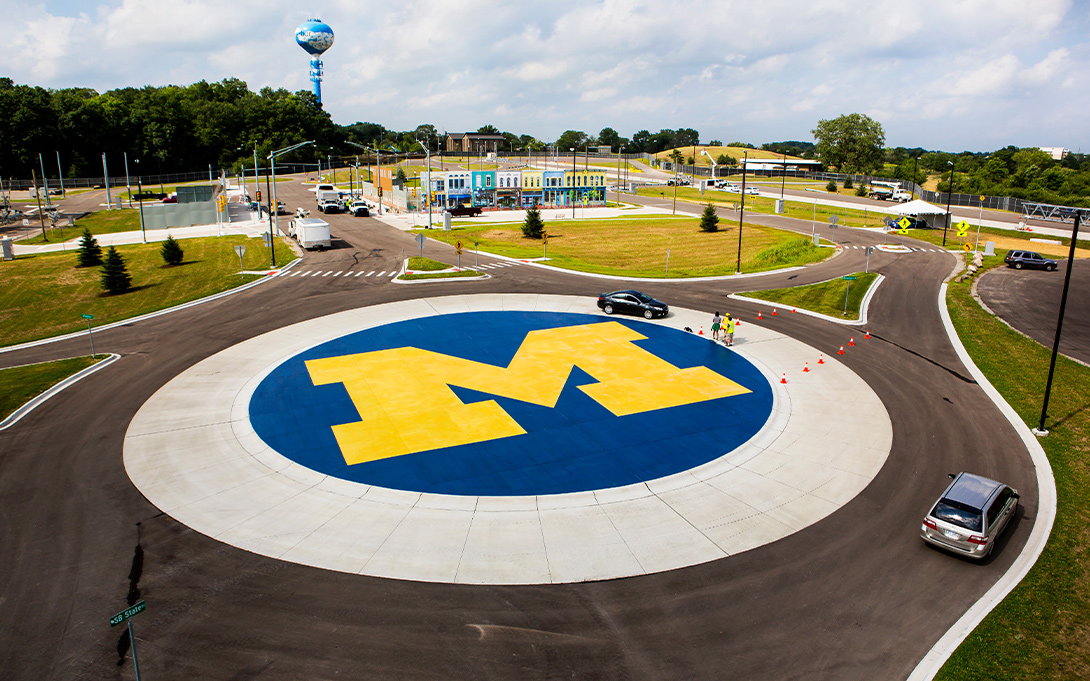
Professor Robert Hampshire brings his transportation expertise to the Ford School
By David Pratt
State & Hill: How did you come to be interested in transportation systems and policy?
Robert Hampshire: Well, it starts with me sitting in a café in Paris—
S&H: This is going to be a great story!
RH: [Laughs.] In 2006, I was finishing my PhD at Princeton in operations research. I was in Paris presenting on telecommunications networks. I was in a café, people watching, and I thought, everyone has a cell phone now, maybe I need a different research topic! Then I noticed all these people on bikes. They’re holding baguettes, riding these bikes, and the bikes are all the same. The city had launched a bike sharing program, Vélib’. There were 20,000 bikes on the street that you could pick up or drop them off at 1,200 stations around the city. It was an interesting interface between the public and the city’s economic system. Later that year, I took my first academic job at the Heinz College of Information Systems and Public Policy at Carnegie Mellon. I began looking at the interaction of transportation systems and civil society. Who has access to transportation systems? What is their role in making cities livable? We worked with Vélib’ and we worked with the city of San Francisco, where people were driving around, looking for parking, generating pollution, and the tall buildings trapped the pollution.
S&H: How is Ann Arbor doing with these issues?
RH: Ann Arbor is pretty near the cutting edge with managing parking and allotting public resources for transportation. A lot of people on campus are world experts in this area—
S&H: Like you!
RH: [Laughs.] Ann Arbor has the largest deployment of Connected Vehicles, run out of the U-M Transportation Research Institute, where I also have an appointment. About 3,000 local vehicles have two-way radios as part of this study, and many intersections have the technology, so cars “talk“ to each other to prevent crashes. Traffic lights also have the technology, so your car communicates with lights, and they change based on traffic flow. You don’t have to slow down and speed up so much; that is where exhaust is generated. Parking in Ann Arbor is also quite advanced. Data from the meters helps with land use planning and road congestion. They adjust pricing at parking structures to incentivize people to park in underused areas, and they raise on-street parking prices in congested areas.
S&H: What might surprise our readers about the future of transportation? Ten years from now, I walk out onto State Street; what do I see that I might not imagine today?
RH: Well, one scenario is fleets of driverless cars going around with no one in them, because there’s nowhere to park, or it’s cheaper to keep driving than to park. We hope these cars are electric! The other problem may be new transportation technology not being accessible to low-income or vulnerable populations. Now, the good news is that driverless vehicles could extend the reach of public transportation, especially for older folks. If you are isolated or shut in, that is related to depression and other health problems. There is a great potential for driverless vehicles to provide mobility for aging adults.
S&H: How did you get from the café in Paris to the University of Michigan?
RH: It was a winding path! My first day of graduate school at Princeton was 9/11. I was in a program called “Operations Research and Financial Engineering,” but in the wake of 9/11, I began courses in a program called, “Science and Technology Policy.” After my PhD, my first position was at the public policy school at Carnegie Mellon. I moved here in 2015, as research faculty at the U-M Transportation Research Institute. In 2018 I came to the Ford School.
S&H: Do you like it?
RH: I love it here, especially the focus on public engagement--directly working with policy makers, doing policy relevant research in a very direct way. We worked directly with the city of Paris and the city of San Francisco. A lot of my projects are working hand-in-hand with people implementing public policy. I find that important.
S&H: Recently, the university has been making a great effort toward increased diversity, equity, and inclusion. Do you see the Ford School doing its part?
RH: I do. I am the DEI co-lead for the Ford School this year, along with Paula Lantz. Part of my research portfolio is a set of activities called “Public Interest Technology,” funded by the New America Foundation. The project is about how to educate the workforce and the public about technology’s role in society, especially with regard to data science perpetuating structural inequity or structural racism. We educate policymakers and data scientists so they have tools and practices that make them aware of possible negative consequences of what they are creating.
Ford master’s students in particular I find to be at the forefront of DEI issues, because, of course, social policy is a key area of inquiry here. The faculty are also more aware, compared to other places I have been. I feel very supported, from Dean Barr on down. The school recognizes that previous public policy decisions did much to create these social problems, although I would say the field has done much more that’s positive.
It’s hard. There is always more to be done.
Below is a formatted version of this article from State & Hill, the magazine of the Ford School. View the entire Spring 2020 State & Hill.